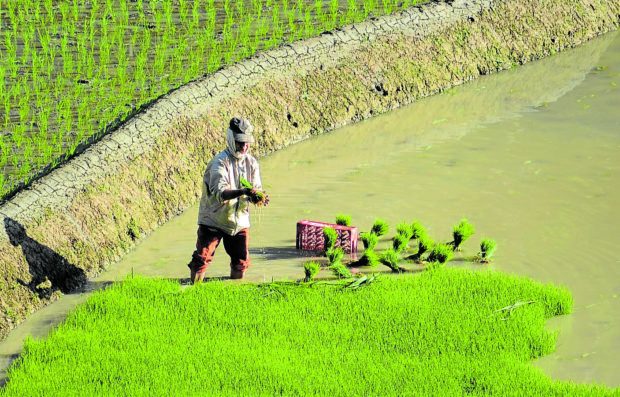
FARMWORK Residents returning to their hometowns in the Cordillera region will find alternative livelihood in farm work, as the health crisis continues to force many businesses to shut down. —EV ESPIRITU
BAGUIO CITY—Farmworkers in the Cordillera region are slowly being replaced by returning residents as the government renews its focus on food production during the coronavirus pandemic.
Dominated by aging workers like the rest in food-growing communities, Cordillera may tap 148 of 527 applicants who want to work in farms under the “Balik Probinsya, Bagong Pag-asa” program, according to Cameron Odsey, regional director of the Department of Agriculture (DA).
Odsey also said young people could consider farming as a lucrative undertaking in light of the “plant, plant, plant” movement being promoted in urban and rural communities.
The Balik Probinsya action plan was discussed last week during a Regional Development Council (RDC) meeting here.Most intended beneficiaries were former residents who migrated to Metro Manila to work or to build new lives until the pandemic triggered a recession that shut down livelihood opportunities there.
No ready work
Cordillera expects more of them to come home from other cities as local economies struggle to survive the health crisis. A number are from Abra, Apayao and Benguet provinces.Close to 500 of the Balik Probinsya applicants have no ready work when they return home, while 488 have no small businesses so they can bounce back, according to the RDC.
A profile of skills and work preferences suggested that more than 100 are prepared for farm work while about 600 may pursue jobs in the service, utility or security sectors.
The DA estimated 298,000 farmers and field workers to cultivate more than 300,000 hectares of land in the region. In Benguet and parts of Mountain Province, which supply most of the salad vegetable demands of Metro Manila, carrots, beans, cabbages, lettuce and cauliflower are grown in farms and gardens carved from mountain sides.
Demand dropped to a crawl at the height of the Luzon lockdown and early months of the subsequent quarantine when hotel and retail businesses closed.
Alternative markets
The DA has found alternative markets for vegetables that are still being grown in the Cordillera, which on a weekly average produces 13,500 metric tons. Metro Manila demand is 5,000 MT a week.
Agriculture officials have laid down the groundwork for financing farm cooperatives that are building facilities for packaging and cold storage to improve vegetable distribution. —VINCENT CABREZA INQ